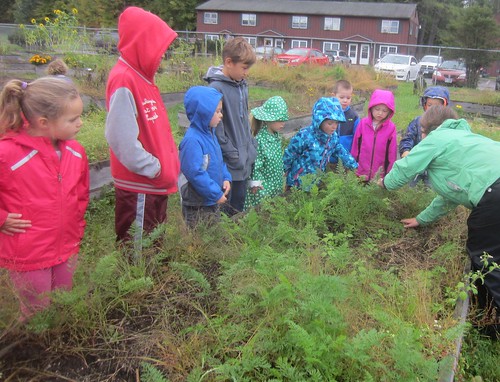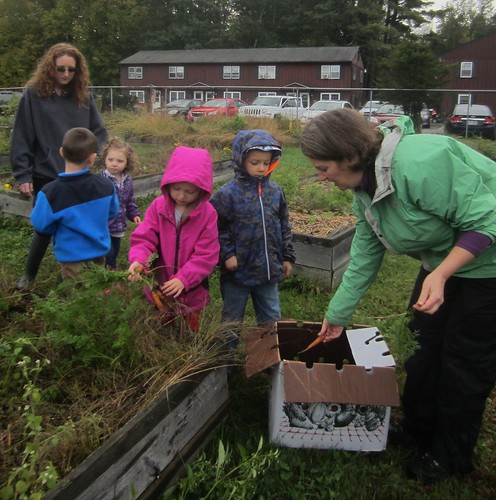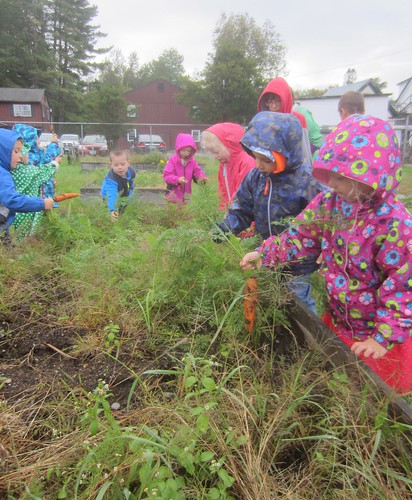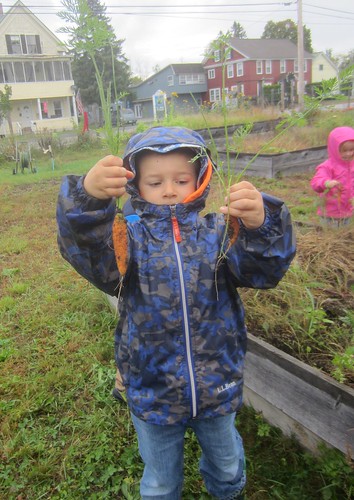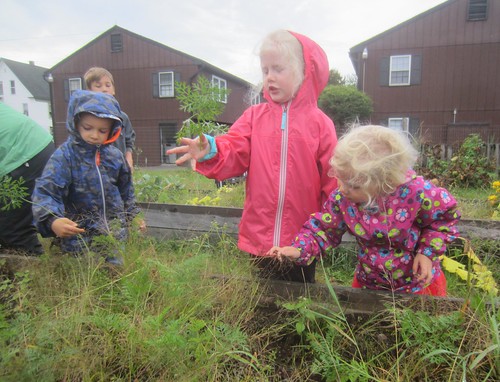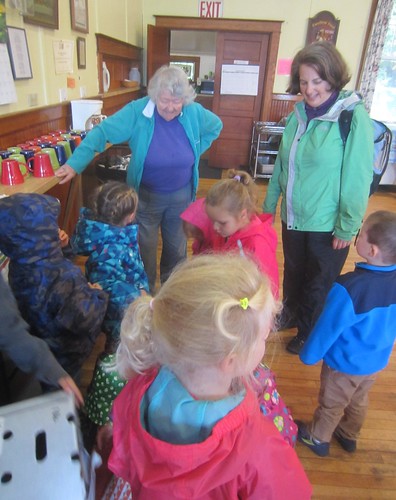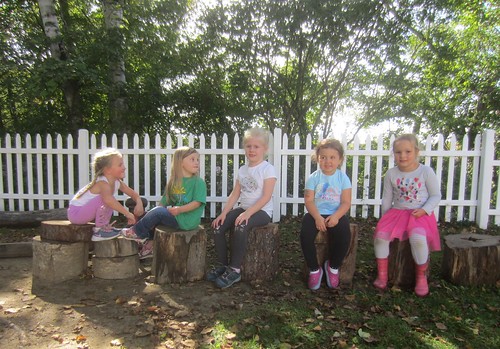 Fall has arrived! The leaves have started changing colors, the crab apples have been falling, and the weather has started to cool as the days get shorter. The children have been busy like squirrels, running around chasing each other, collecting treasures of nature, and practicing their balance.
Fall has arrived! The leaves have started changing colors, the crab apples have been falling, and the weather has started to cool as the days get shorter. The children have been busy like squirrels, running around chasing each other, collecting treasures of nature, and practicing their balance.
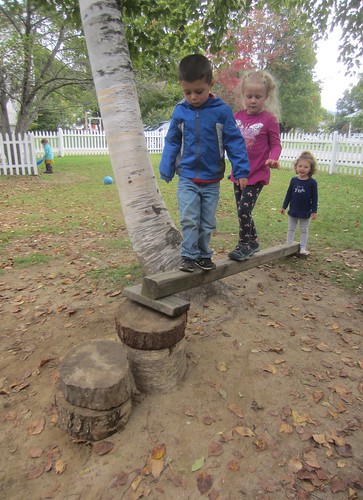
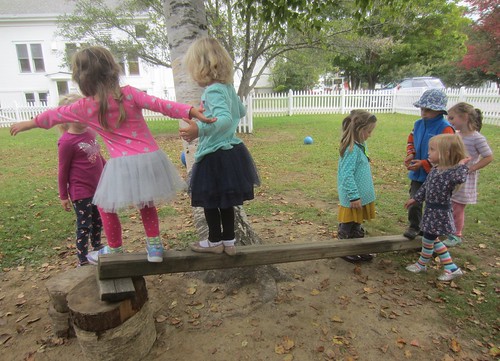
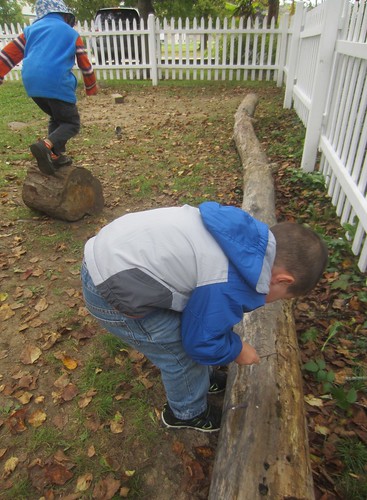
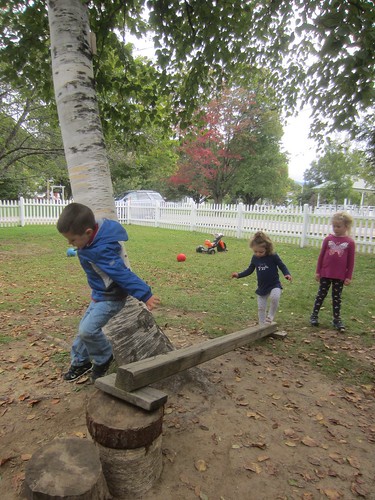
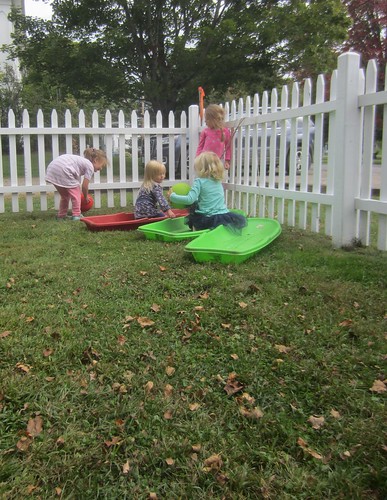

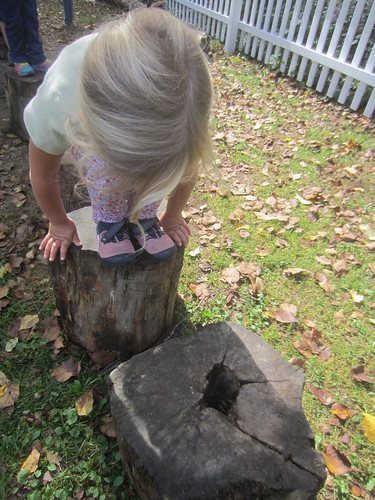 For Monday art we learned about the Mexican artist, Frida Kahlo, who is famous for her self portraits. We looked at a few of her tamer self-portraits, and some self-portraits by other artists. We observed that the self-portraits looked just like the artists, with accurate skin tones, hair shades, eye colors, face shapes, and features. We then used markers, crayons, colored pencils, and/or water color paints to create our own self-portraits. We read the stories Whoever You Are by Mem Fox, and Why am I Me? and introduced this activity to the class on Tuesday. Throughout the week Susan guided small groups through the creation of their own self-portraits, which are displayed in the art gallery (except for another 4 or 5 to finish up next week).
For Monday art we learned about the Mexican artist, Frida Kahlo, who is famous for her self portraits. We looked at a few of her tamer self-portraits, and some self-portraits by other artists. We observed that the self-portraits looked just like the artists, with accurate skin tones, hair shades, eye colors, face shapes, and features. We then used markers, crayons, colored pencils, and/or water color paints to create our own self-portraits. We read the stories Whoever You Are by Mem Fox, and Why am I Me? and introduced this activity to the class on Tuesday. Throughout the week Susan guided small groups through the creation of their own self-portraits, which are displayed in the art gallery (except for another 4 or 5 to finish up next week).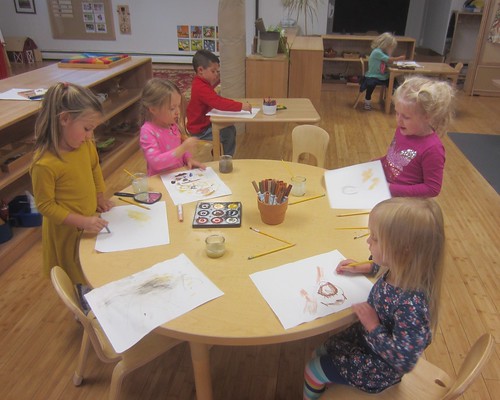
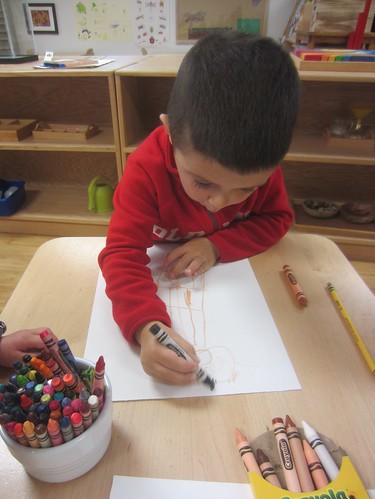

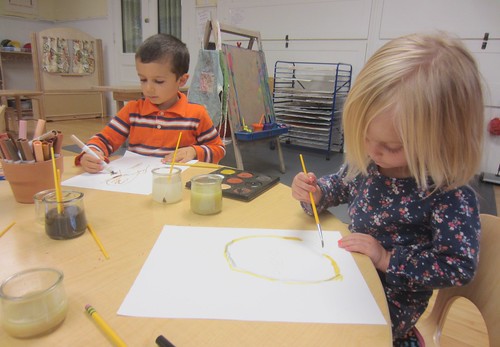
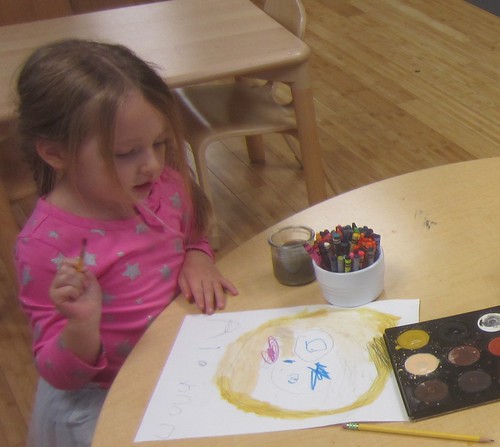
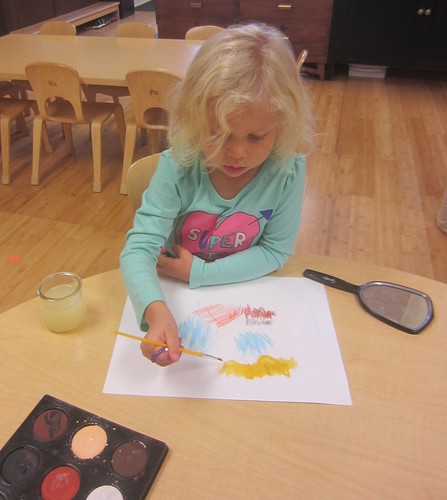

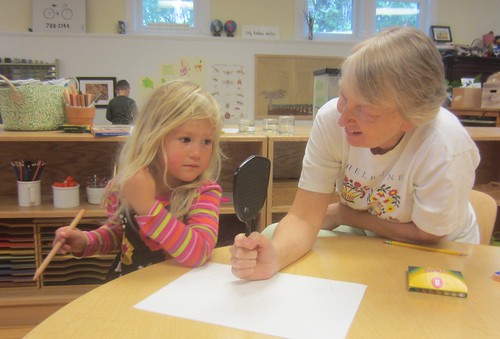
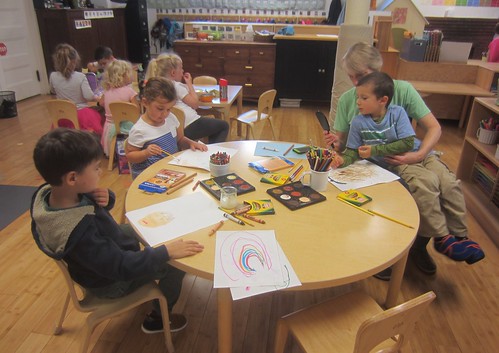
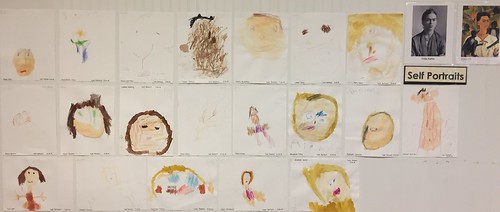 We continued to read about and discuss farming, farm animals, gardens, and harvesting. On Wednesday morning we got to meet our calf. She visited from the Fay farm, and we learned so much about her. Our calf is brown. She is a Jersey. Jerseys produce milk that has a lot of thick cream. When she grows up (in about two years), her milk will be sold to Cabot, and made into cheese. Right now our calf is one month old and weighs 90 pounds. When she was born she weighed as much as a human four-year old (about 40 lbs), but when she grows up she will weigh 1000 lbs! Right now she is still drinking milk – 2 gallons every day! Soon she will start eating grain and grass. She lives in her own hutch in a group of hutches near other calves. Since she is still a baby, this helps keep her healthy and free from catching germs from other cows. When she is a little older she will live with a group of other calves, who will become lifelong friends (just like Sunnybrook friends!). We were so excited to each have a turn to pat her and lead her around on her halter. At the end of the morning, we were gifted with all sorts of goodies from the farm – cheese, stickers, a pencil, a bracelet, a tattoo, and a snack guide. Everyone was thrilled with their gifts. Over the weekend we will think of names for our calf. We will share our ideas and vote on what to name her on Tuesday.
We continued to read about and discuss farming, farm animals, gardens, and harvesting. On Wednesday morning we got to meet our calf. She visited from the Fay farm, and we learned so much about her. Our calf is brown. She is a Jersey. Jerseys produce milk that has a lot of thick cream. When she grows up (in about two years), her milk will be sold to Cabot, and made into cheese. Right now our calf is one month old and weighs 90 pounds. When she was born she weighed as much as a human four-year old (about 40 lbs), but when she grows up she will weigh 1000 lbs! Right now she is still drinking milk – 2 gallons every day! Soon she will start eating grain and grass. She lives in her own hutch in a group of hutches near other calves. Since she is still a baby, this helps keep her healthy and free from catching germs from other cows. When she is a little older she will live with a group of other calves, who will become lifelong friends (just like Sunnybrook friends!). We were so excited to each have a turn to pat her and lead her around on her halter. At the end of the morning, we were gifted with all sorts of goodies from the farm – cheese, stickers, a pencil, a bracelet, a tattoo, and a snack guide. Everyone was thrilled with their gifts. Over the weekend we will think of names for our calf. We will share our ideas and vote on what to name her on Tuesday.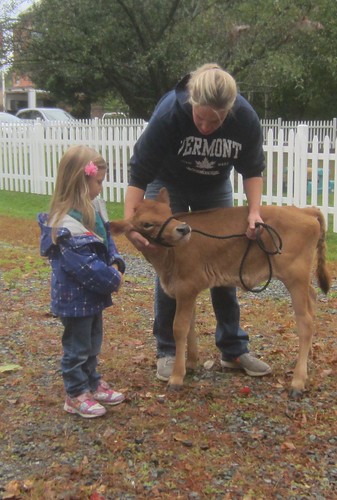

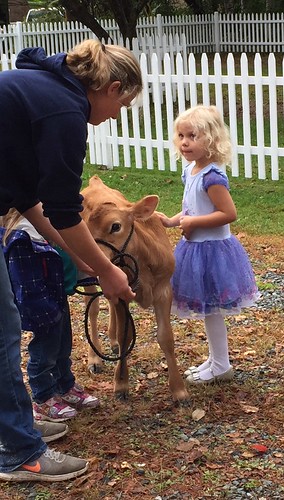

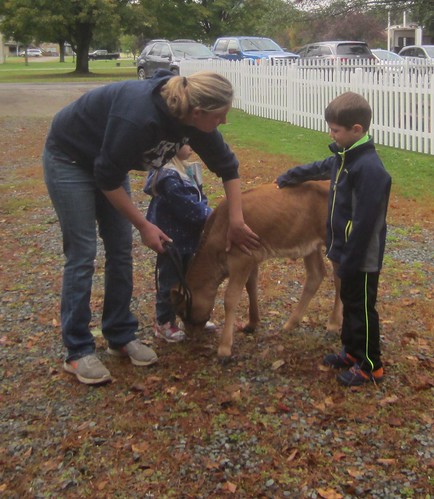

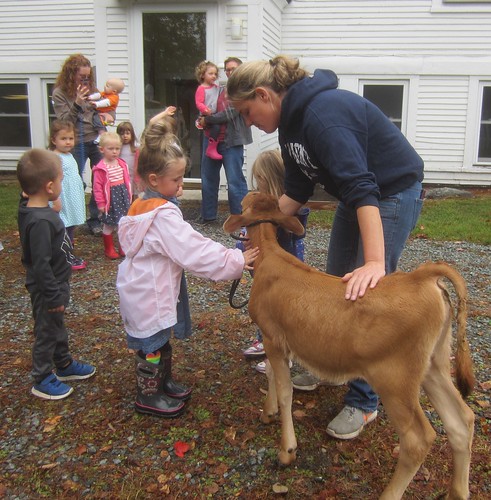



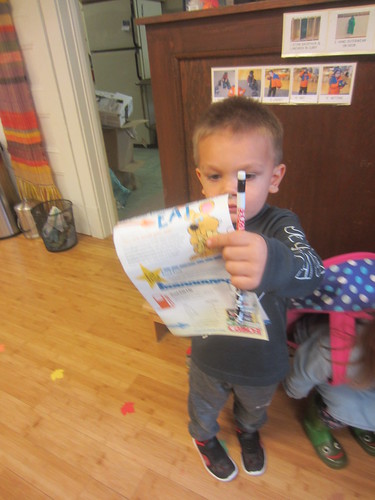 For woodworking Mr. Bond prepared a hammering activity. Each child used a hammer to pound nails down into a piece of wood, then turned it over and hammered it back through. They continued to hammer until they were ready to move on – some did it just once, while others did it several times. They were impressively accurate with their hammering skills!
For woodworking Mr. Bond prepared a hammering activity. Each child used a hammer to pound nails down into a piece of wood, then turned it over and hammered it back through. They continued to hammer until they were ready to move on – some did it just once, while others did it several times. They were impressively accurate with their hammering skills!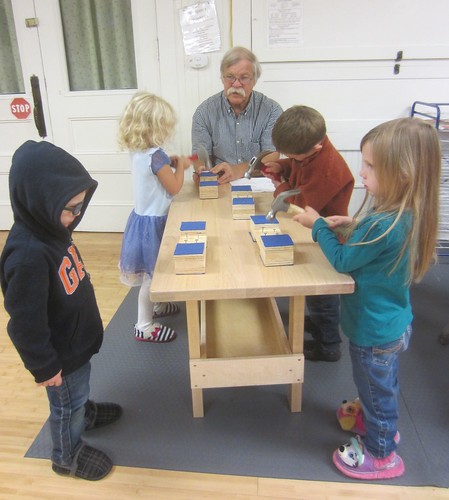
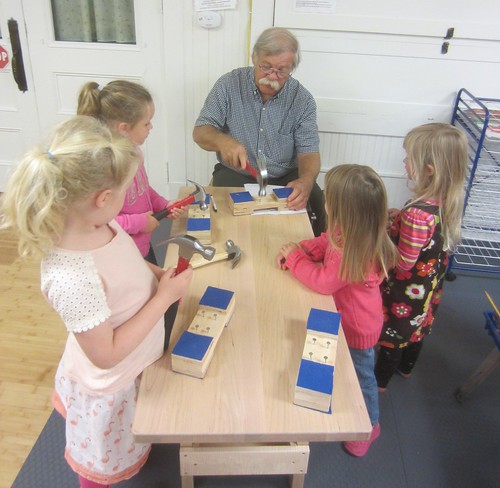 We read Tops and Bottoms by Janet Stevens. Lazy Bear and Clever Hare performed the story for us, along with Clever Hare’s family. Click this sentence to view a video recording of the story.
We read Tops and Bottoms by Janet Stevens. Lazy Bear and Clever Hare performed the story for us, along with Clever Hare’s family. Click this sentence to view a video recording of the story.
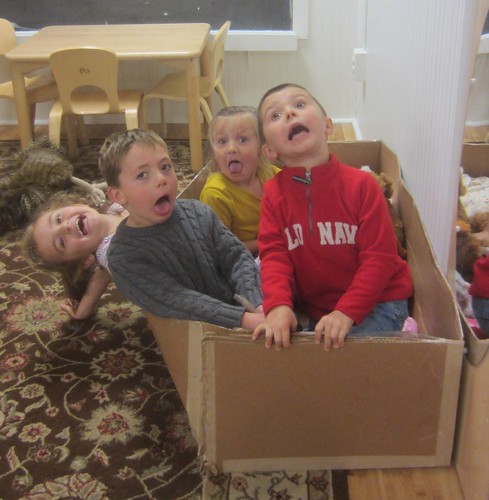
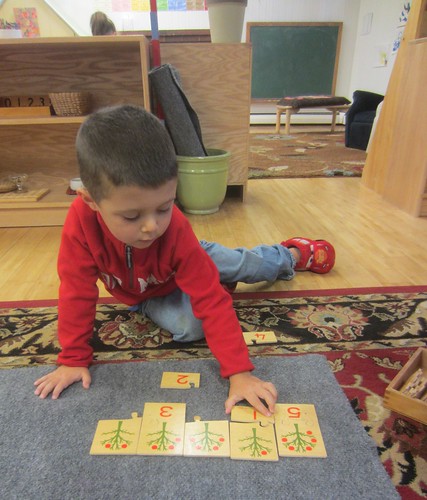
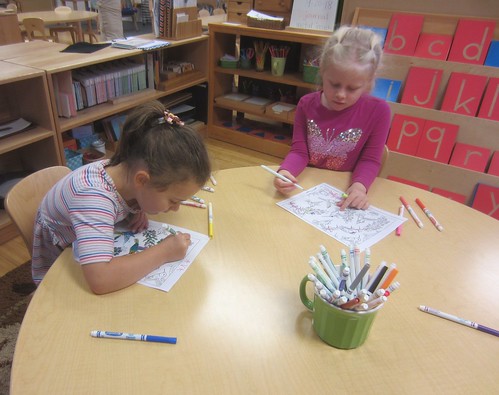
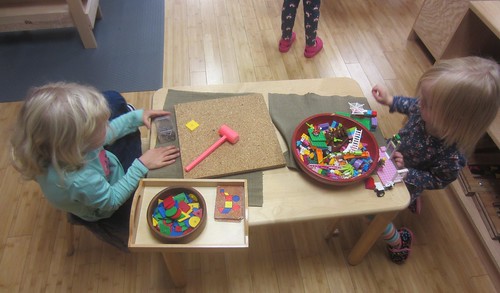
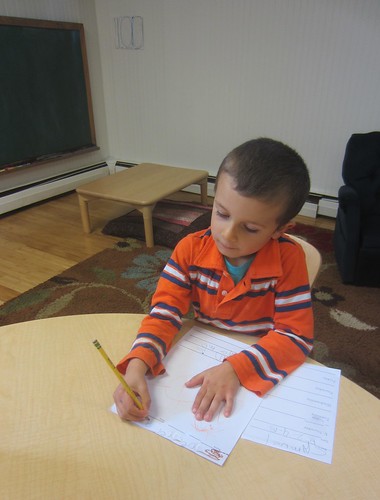
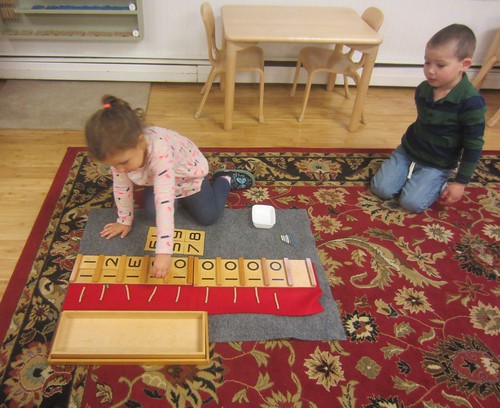
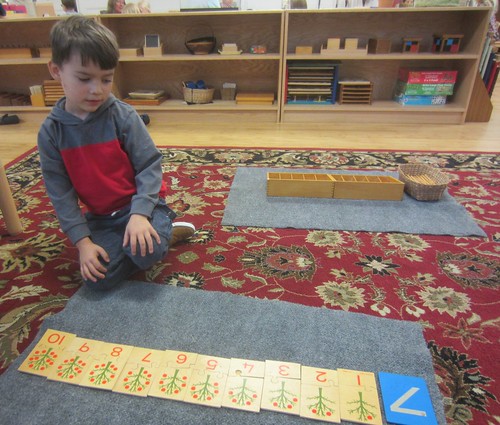
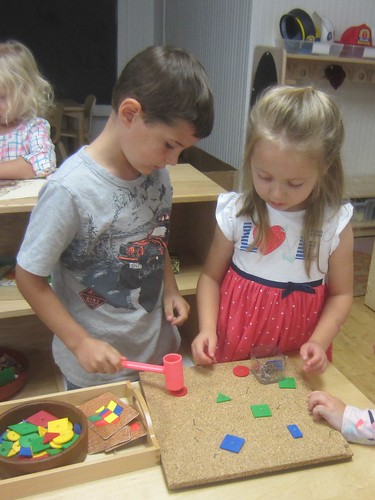
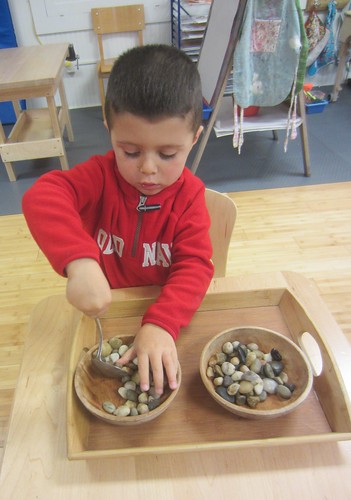
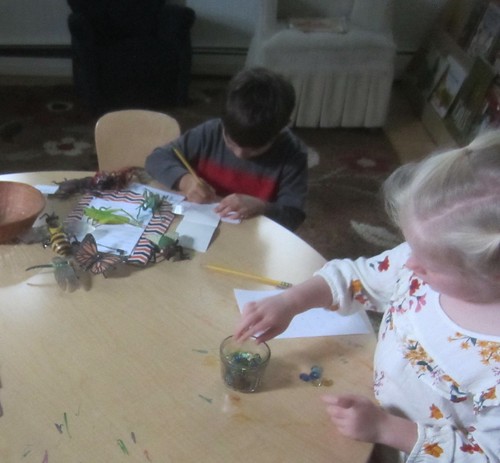

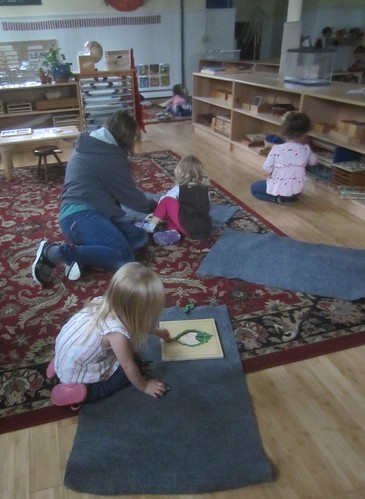
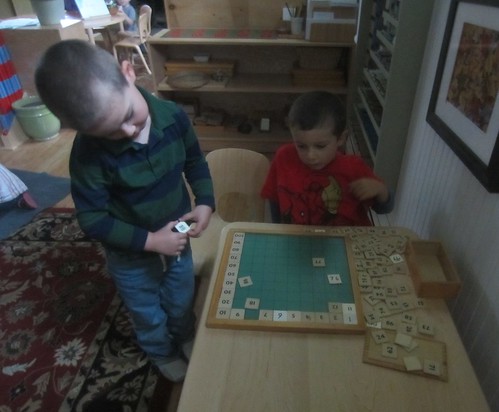
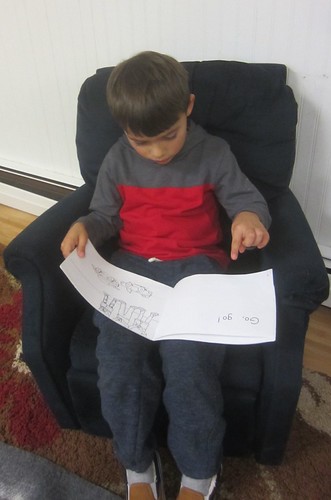
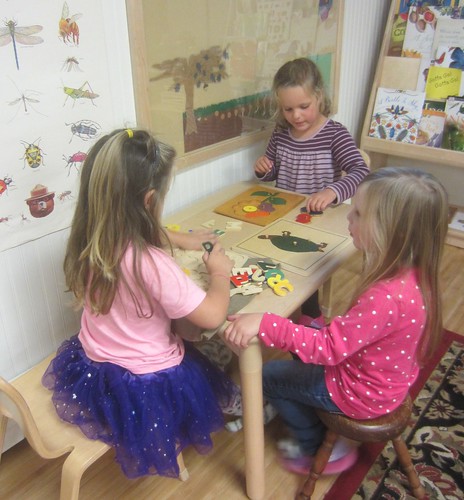

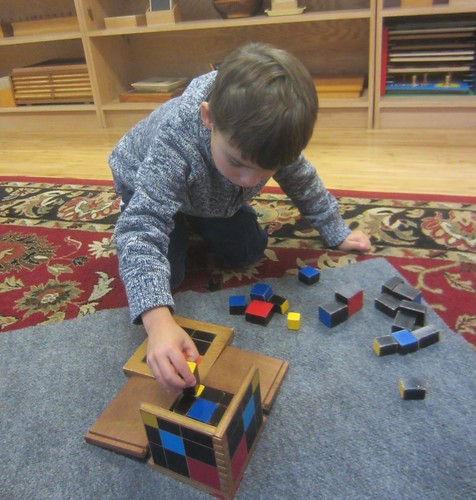

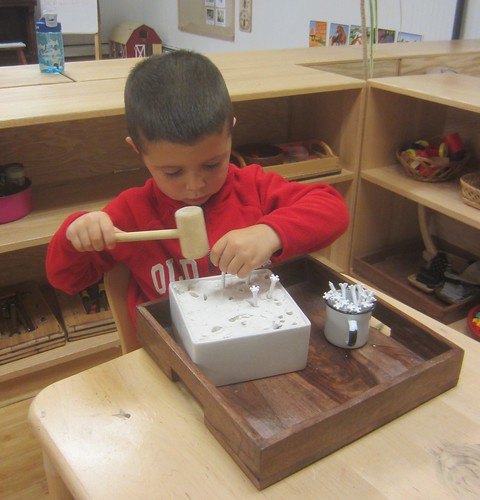

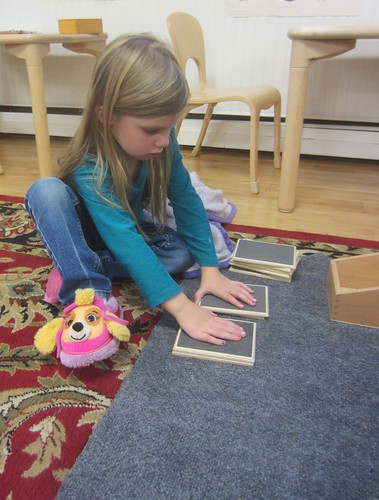
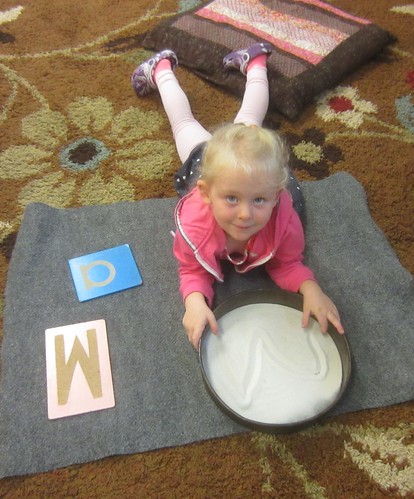
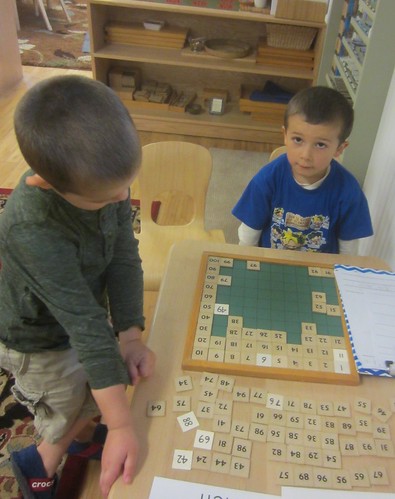
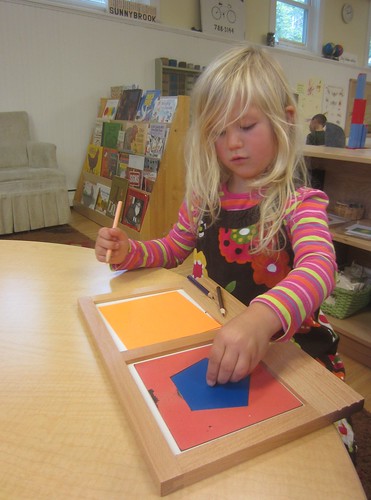
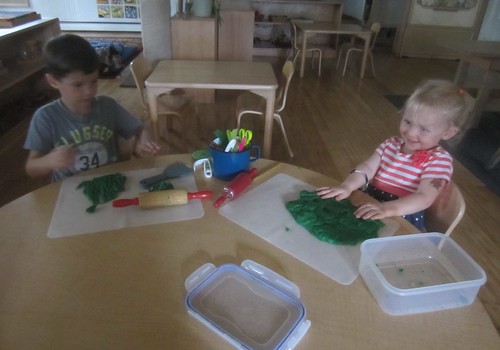
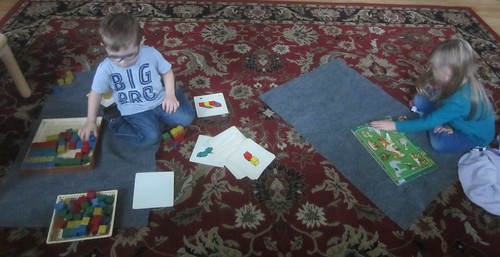
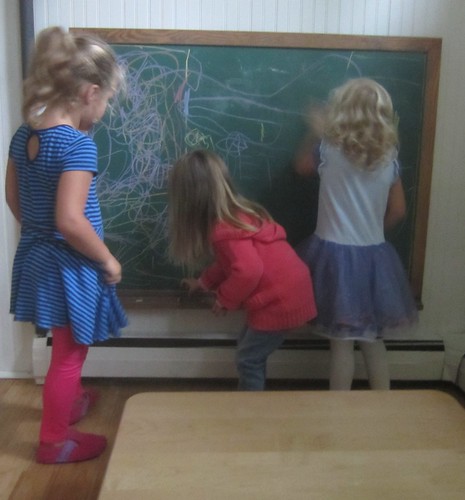

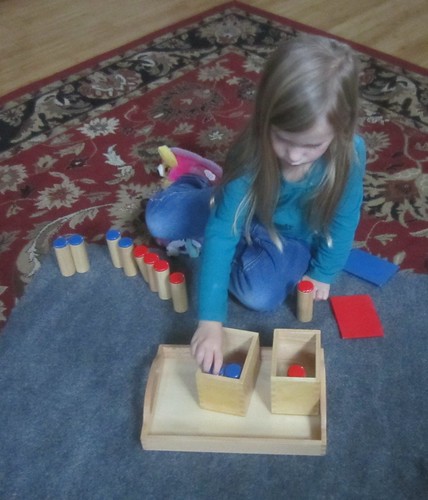
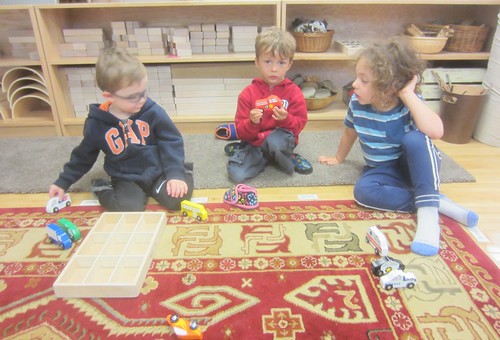


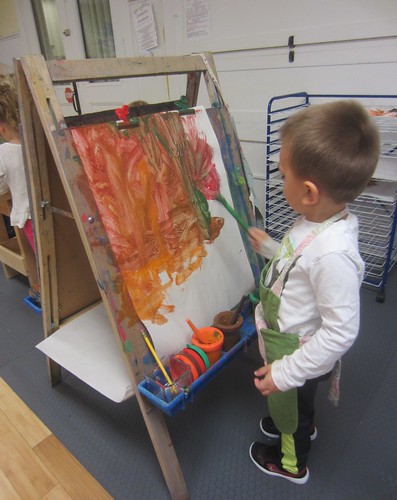


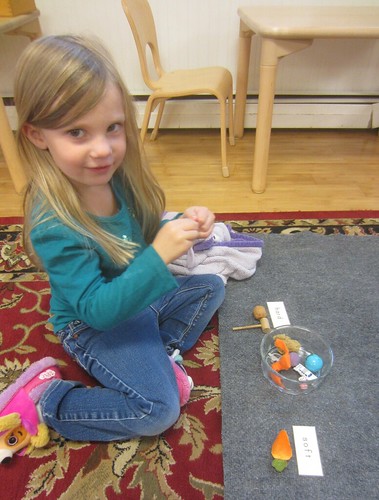
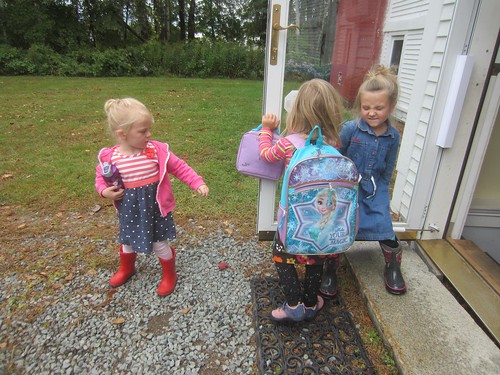
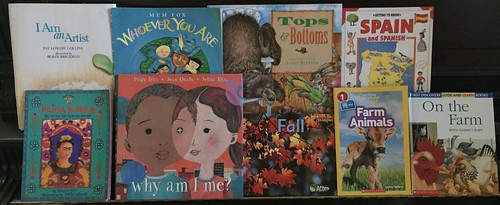 Zeanny introduced Spanish Heritage month, which we will be learning about over the next several weeks. She brought a map of Central and South America, and the country of Spain. She showed us each of the countries where Spanish is the primary language, and we practiced repeating their names. Zeanny told us that music and dancing and brightly colored clothes and flavorful foods are a part of Latino culture. She read us a story about Spain, where the Spanish language originated, and we watched a Sesame Street Video about a Latino festival. We danced along to the song as it played. After Spanish, several students carefully colored in the countries on the map where Spanish is spoken, and we hung it on the wall.
Zeanny introduced Spanish Heritage month, which we will be learning about over the next several weeks. She brought a map of Central and South America, and the country of Spain. She showed us each of the countries where Spanish is the primary language, and we practiced repeating their names. Zeanny told us that music and dancing and brightly colored clothes and flavorful foods are a part of Latino culture. She read us a story about Spain, where the Spanish language originated, and we watched a Sesame Street Video about a Latino festival. We danced along to the song as it played. After Spanish, several students carefully colored in the countries on the map where Spanish is spoken, and we hung it on the wall.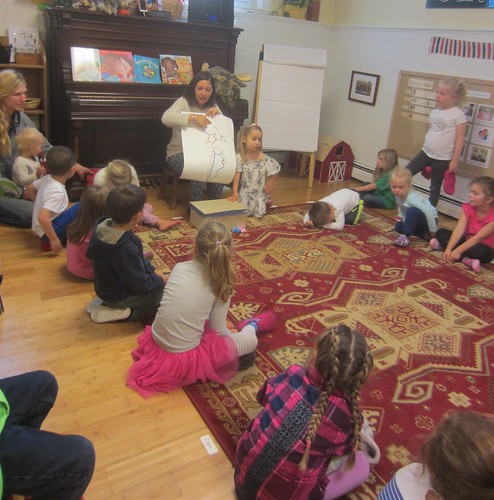
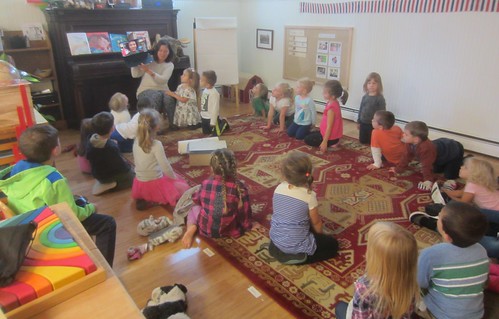
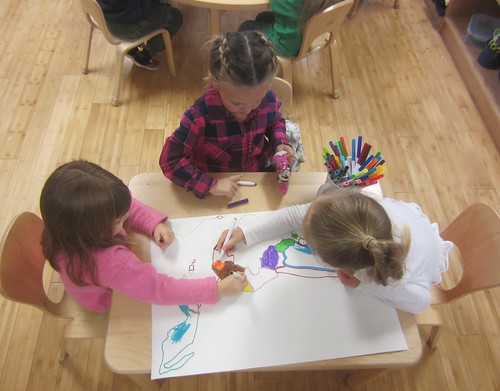 During music with Susan we continued to practice rhythms, but this time on the big drum. We sang our songs, and Susan introduced some new ones about fall. We followed Susan’s drumming patterns, carefully listening, watching, and counting to be sure we played slowly, quickly, and tapped out the correct number of taps. Finally, at the end, we made rain drip drop, then pitter patter, then booming thunder so loud we had to cover our ears!
During music with Susan we continued to practice rhythms, but this time on the big drum. We sang our songs, and Susan introduced some new ones about fall. We followed Susan’s drumming patterns, carefully listening, watching, and counting to be sure we played slowly, quickly, and tapped out the correct number of taps. Finally, at the end, we made rain drip drop, then pitter patter, then booming thunder so loud we had to cover our ears!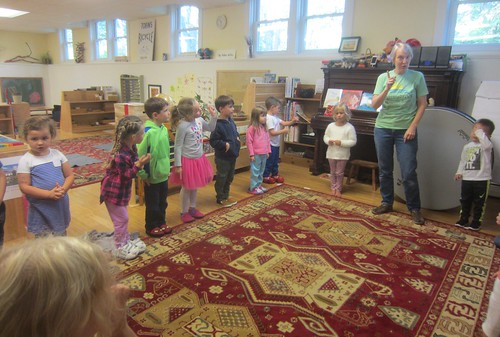
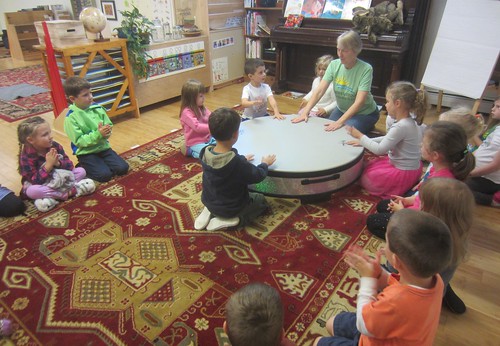

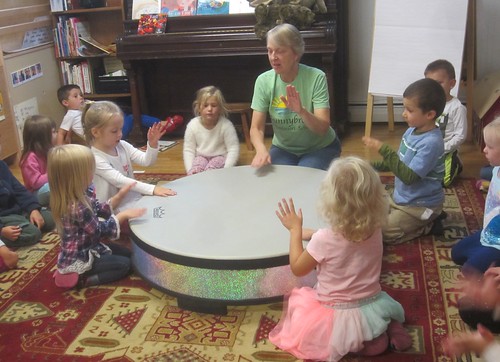
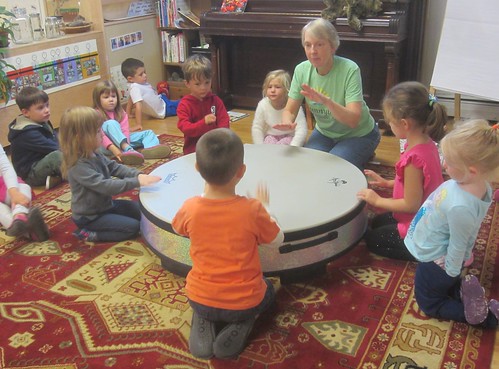

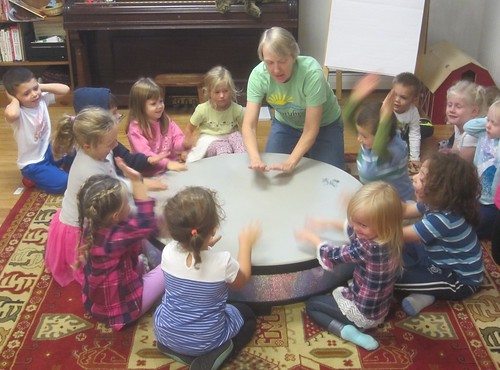
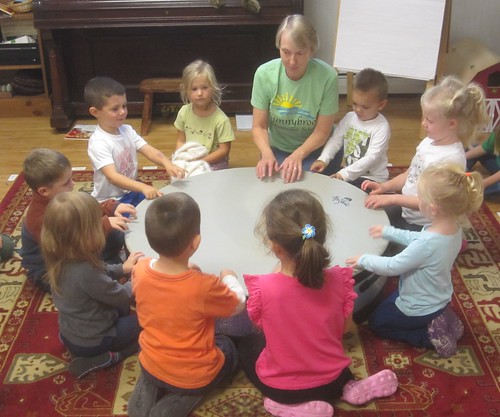 The sun arrived for the harvest festival and most of the children chose to help set up. They carried out the pumpkins, paints, smocks, paper, crayons, hoops, etc. and arranged the items on the playground. Thank you so much to Mr. Bond for the pumpkins for painting! (We still have several painted pumpkins on the playground if your child’s did not come home on Thursday). When it was time, we were anxious to get out to enjoy all of the activities. There was pumpkin painting, vegetable printing, apple transferring with tongs from one bucket of water to another, leaf, bark, and wood rubbing prints with crayons, pumpkin balancing, and an acorn balancing obstacle course, where the children held acorns on little spoons and carefully maneuvered over balance pods, stepping stones, up the balance beam, over the stumps, and through the hoops. It was such a fun day!
The sun arrived for the harvest festival and most of the children chose to help set up. They carried out the pumpkins, paints, smocks, paper, crayons, hoops, etc. and arranged the items on the playground. Thank you so much to Mr. Bond for the pumpkins for painting! (We still have several painted pumpkins on the playground if your child’s did not come home on Thursday). When it was time, we were anxious to get out to enjoy all of the activities. There was pumpkin painting, vegetable printing, apple transferring with tongs from one bucket of water to another, leaf, bark, and wood rubbing prints with crayons, pumpkin balancing, and an acorn balancing obstacle course, where the children held acorns on little spoons and carefully maneuvered over balance pods, stepping stones, up the balance beam, over the stumps, and through the hoops. It was such a fun day!
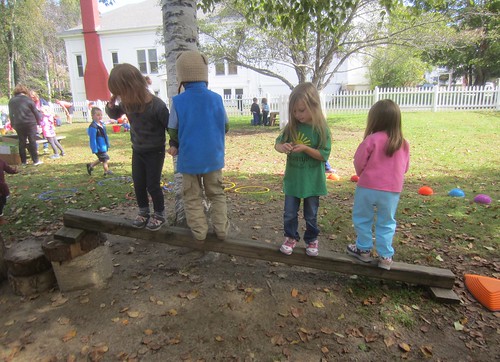
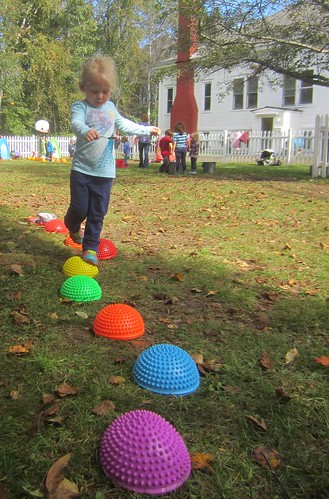
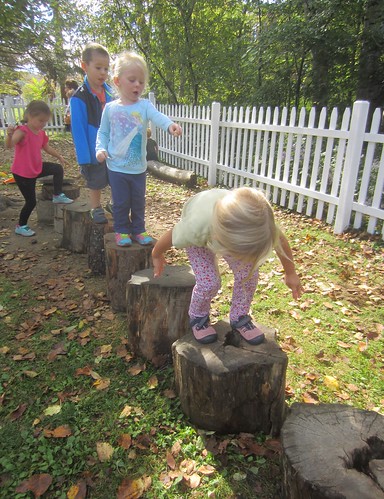

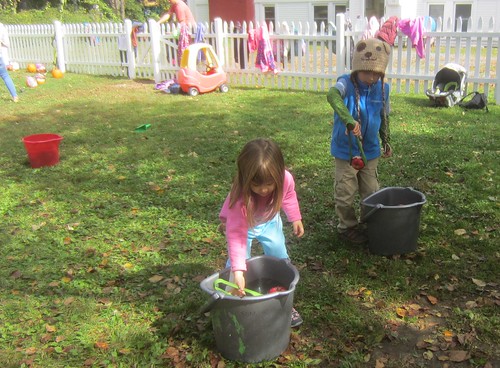
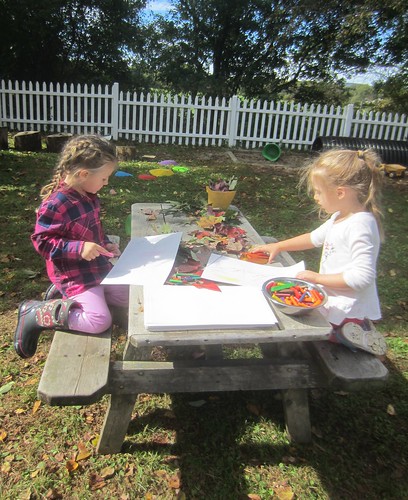
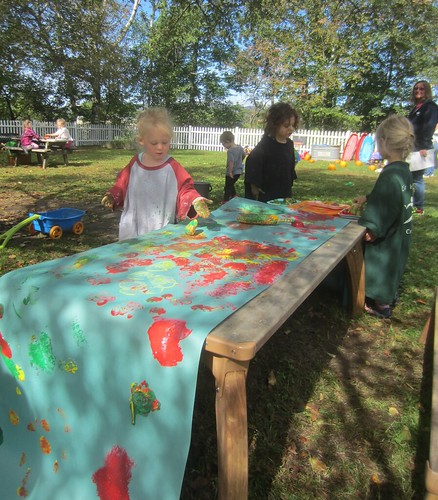

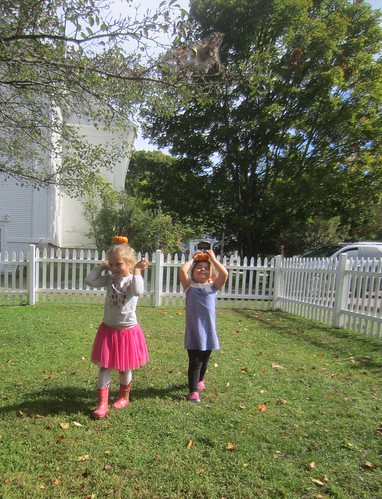
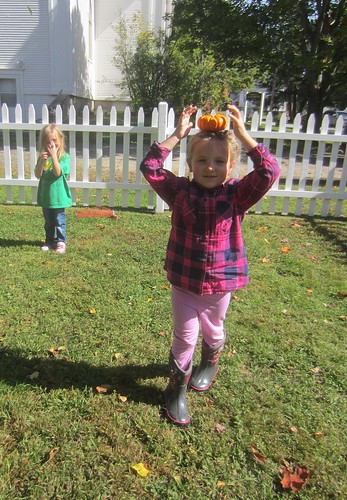
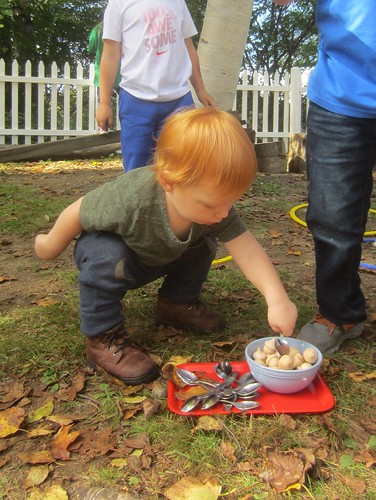 Friday students took their first field trip. Melissa Grella from Taproot Environmental Education came to Sunnybrook and walked with us down to the Community Garden. We were so careful to hold hands with our partners the entire walk and to stay behind the pair in front of us. When we reached the Community Garden, Melissa showed us the raised bed where the McCormick family had planted carrots for the food bank. We learned to pull them up by grasping at the bottom on the leafy stems at the top of the carrot and pull it up out of the ground. Some of them were quite big and stubborn and needed some extra help to get out. We snapped off the tops, which went into the compost, and put the carrots in a box. When we had pulled them all, we washed off our hands and some of the carrots, which we then got to try. We walked the carrots back down to the food bank at the Methodist church, where we dropped them off with Myra Emerson, who will use them in a soup or other dish for families to enjoy. Thank you to Melissa for allowing us to participate in harvesting the carrots and accompanying us on our walk!
Friday students took their first field trip. Melissa Grella from Taproot Environmental Education came to Sunnybrook and walked with us down to the Community Garden. We were so careful to hold hands with our partners the entire walk and to stay behind the pair in front of us. When we reached the Community Garden, Melissa showed us the raised bed where the McCormick family had planted carrots for the food bank. We learned to pull them up by grasping at the bottom on the leafy stems at the top of the carrot and pull it up out of the ground. Some of them were quite big and stubborn and needed some extra help to get out. We snapped off the tops, which went into the compost, and put the carrots in a box. When we had pulled them all, we washed off our hands and some of the carrots, which we then got to try. We walked the carrots back down to the food bank at the Methodist church, where we dropped them off with Myra Emerson, who will use them in a soup or other dish for families to enjoy. Thank you to Melissa for allowing us to participate in harvesting the carrots and accompanying us on our walk!
